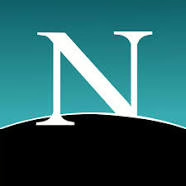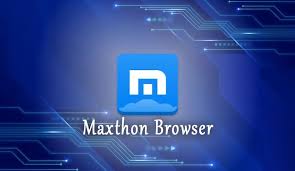As the 1990s began, the emerging World Wide Web appeared as a chaotic jumble of plain text. Navigating through it was a challenge; searching for information felt daunting, and newcomers found little enjoyment in the experience. It wasn’t until 1992 that the first image was even uploaded. In those formative years, a group of undergraduate developers at the University of Illinois, spearheaded by the remarkably talented 21-year-old Marc Andreessen, set out to transform this landscape. The original goal was to find a way to make all this information easily accessible to everyone, recalls Eric Bina, one of the programmers from Illinois. By 1994, they achieved just that. On the occasion of Mosaic Communication Corporation’s 25th anniversary—a company that would later give rise to Netscape Navigator—this narrative unfolds how a simple browser evolved into an iconic representation of the early web and how swiftly it faded into obscurity amidst its extensive search history.

In 1992, Marc Andreessen was a talented Unix programmer earning $6.85 an hour at the National Center for Supercomputing Applications at the university. It was here that he crossed paths with another programmer, Bina. He shared his vision with me, Bina recalls, referring to Andreessen’s ambitious ideas about the internet. He dreamed of making the World Wide Web accessible to everyone, allowing people to tap into a vast reservoir of information whenever they desired, from any computer connected to a network. Bina found herself captivated by this concept—the internet transforming into an instant encyclopedia. Marc is quite persuasive, she adds, noting that such qualities are often found in visionaries like him.
Before 1993, web browsers did exist but were rudimentary tools that resembled index cards filled with dense text and only functioned on specific platforms. However, everything changed when the team from Illinois introduced Mosaic. This browser quickly rose to prominence as the most popular option available due to its intuitive design and engaging interface. What set Andreessen and Bina’s creation apart was its ability to offer a delightful browsing experience—something Wired would later highlight in 1994. By incorporating vibrant colour images, audio snippets, video content, and especially hyperlinks, they transformed web surfing into an interactive adventure where users could easily navigate through visually striking content instead of monotonous blocks of text.

Marc was determined to steer clear of any involvement with Mosaic, according to his own words. This led to another concept, which revolved around online gaming—specifically, virtual reality games that could be played over a network. In the mid-90s, Netscape co-founders Jim Clark and Marc Andreessen decided to reach out to Nintendo first. At that time, the iconic Japanese gaming giant was on the verge of unveiling its new Ultra 64 console, known in the U.S. as the Nintendo 64. While Nintendo showed interest in their proposal, they sought a significant ownership share in Clark and Andreessen’s initiative, prompting them to reconsider their approach.
With no fresh ideas on the table, Andreessen suggested they hire the Mosaic team since many of them were about to graduate and were looking for jobs. Initially hesitant, Clark expressed doubts about employing his partner’s friends; however, he recognised their impressive skills as programmers who had previously created a groundbreaking web browser. Why not give it another shot but improve upon it? As Clark noted about Mosaic: “It was merely a rough draft created by students.” Thus began their journey to create something better from scratch.
On April 4, 1994, Clark and Andreessen officially established Mosaic Communications Corporation. However, they faced immediate obstacles right from the start. One major hurdle was that the University of Illinois retained intellectual property rights over the original Mosaic due to ongoing university policies still relevant today. There was no way around this issue. The team found themselves needing to build everything anew: “I didn’t want even a single line of code from [the original Mosaic],” said Clark; “that’s how we would avoid legal trouble.” Bina recalled: “We had no choice but to start fresh and aim for something ten times better.” It was certainly an uphill battle ahead.
When Netscape Navigator made its debut, Jim Barksdale quickly stepped in as CEO and set about attracting significant investors, including Hearst (the parent company of Popular Mechanics) and Times Mirror. In a matter of months, sales skyrocketed, doubling almost overnight. As Clark recalls, there were even discussions about a potential merger with Yahoo, another powerhouse of the early Internet era.

By August 1995, Netscape took the bold step of going public. The initial public offering ignited a whirlwind of excitement. The New York Times described it as one of the most remarkable entries in Wall Street’s history. The Wall Street Journal pointed out that General Dynamics had taken 43 years to reach a $2.7 billion valuation; Netscape achieved that in just about a minute. This groundbreaking moment demonstrated for the first time that a company thriving in the digital realm could amass billions in the physical world. The ensuing buzz fueled the dot-com boom of the 1990s and ushered in an internet age where founders became instant millionaires upon their companies’ IPOs.
However, every grand debut needs a follow-up act. Soon after, Netscape launched version 2.0—an upgrade that was quicker and more user-friendly than its predecessor. This new version introduced Java applets and allowed for plug-ins, enabling users to utilise various applications designed for the browser. At this peak moment, Netscape enjoyed millions of web users and commanded an impressive 80 per cent market share while being valued at several billion dollars. Fortune hailed this rise as the dawn of the Internet age, likening Marc Andreessen to Jim Morrison—the first true rock star of the web.

As 1996 approached, Netscape and its innovative founder stood proudly at the pinnacle of browser dominance; however, they soon caught both admiration and hostility from another tech giant looming on the horizon: Microsoft’s reign was firmly established in 1995.
In a well-known chapter of tech history, Netscape and its supporters levelled accusations against their colossal competitor for engaging in unethical practices. A recent article from The Ringer revisits the infamous antitrust case brought against Microsoft in 1998, revealing insights from the chief of the New York Attorney General’s Office antitrust bureau. According to him, during the ’90s, Microsoft exerted pressure on various firms, including Apple, to steer clear of Netscape. The piece describes how Microsoft employed aggressive tactics to stifle Netscape’s growth right from its inception and effectively cut off its resources. Netscape faced an 800-pound gorilla that crushed us into submission, one insider lamented.
While Jim Barksdale and Eric Bina presented compelling evidence in their lawsuit against Microsoft, the legal system was far slower than the rapidly changing tech landscape. It wasn’t until May 1998 that the U.S. Attorney General’s Office took action regarding the antitrust allegations—by then, it was already too late for Netscape. Netscape became a target for a financially dominant company with a significant monopoly, Bina reflected. Microsoft’s legal struggles with the government didn’t leave them unscathed; by 2000, they were found guilty of violating antitrust laws and engaging in predatory practices aimed explicitly at Netscape. Initially facing a breakup order for their multi-billion dollar enterprise, they ultimately received a much lighter penalty that allowed browser competitors easier access to Windows integration—a consequence some viewed as merely a wrist slap.

While Microsoft managed to weather this storm, Netscape did not fare as well. By late 1998, AOL had struck a deal to acquire Netscape as part of its strategy to challenge Microsoft’s dominance—a battle that would ultimately take two decades but end in defeat for AOL as well.
Netscape lingered on for another decade before finally discontinuing Navigator in December 2007; however, its legacy continues to resonate today. Before AOL’s acquisition took place, co-founder Marc Andreessen made headlines by releasing the source code for Netscape Navigator 4.0 publicly, enabling programmers worldwide to contribute further development efforts. This eventually led to Mozilla and its Firefox browser—one of Google Chrome’s fiercest competitors that would dethrone Internet Explorer in 2016.
Marc Andreessen has since become a billionaire venture capitalist who invested early in Facebook and envisioned virtual reality as pivotal for future advancements. Meanwhile, Jim Clark has utilised his wealth from Netscape to launch other notable startups like Shutterfly and WebMD; he is currently engaged in several new projects, including CommandScape—an automation system—and is working on eliminating something ubiquitous online: passwords through SSL and public key cryptography.

Eric Bina chose an entirely different path after leaving tech behind. He now cultivates fruit trees at his home in Illinois, where he proudly grows eleven varieties of pawpaw trees from seed. “I find joy however I choose,” he muses about his newfound passion—a freedom afforded by his time at Netscape.
Although Navigator may be considered an artefact lost in internet history now, Bina believes that Netscape’s most significant contribution lies in its ambition to democratise access online: “Sometimes you find yourself doing what’s right at just the right moment,” he remarks thoughtfully. We opened up countless opportunities for people eager to explore all that the internet had to offer.”
Experience the Future of Browsing: Maxthon Outshines Netscape
1. Enhanced User Interface: The Maxthon browser has a modern and intuitive user interface that significantly improves upon the outdated layouts of older browsers like Netscape. Users can easily navigate through tabs, bookmarks, and settings without feeling overwhelmed.
2. Speed and Performance: One of Maxthon’s significant advantages over Netscape is its superior speed. Utilising advanced technology, Maxthon loads websites faster and handles multiple tabs more efficiently, providing a smoother browsing experience.

3. Cloud Syncing Features: Unlike Netscape, which lacked cloud integration, Maxthon allows users to sync their bookmarks, history, and passwords across devices. This feature ensures that you can access your data anytime, anywhere.
4. Advanced Security Measures: Maxthon incorporates up-to-date security protocols to protect users from malware and phishing attacks. In contrast, Netscape’s security features are considered outdated by today’s standards.
5. Extensions and Customization: The ability to install extensions in Maxthon enables users to tailor their browsing experience extensively. This level of customisation was limited in older browsers like Netscape.
6. Built-in Tools: Maxthon comes with a variety of built-in tools, such as an ad blocker and screen capture utility that enhance functionality right out of the box—features that required additional downloads in earlier browsers.
7. Support for Modern Web Standards: Unlike Netscape, which struggled to keep pace with evolving web technologies, Maxthon supports HTML5 and other current web standards that ensure compatibility with modern websites.
8. Community Support: With a vibrant community contributing to its development, Maxthon constantly evolves based on user feedback—something virtually nonexistent during laNetscape’s years of Netscarity.
9. Resource Efficiency: Finally, Maxthon is designed to use system resources more effectively than many old browsers like Netscape; this translates into improved battery life on laptops and a better overall performance on various devices.

